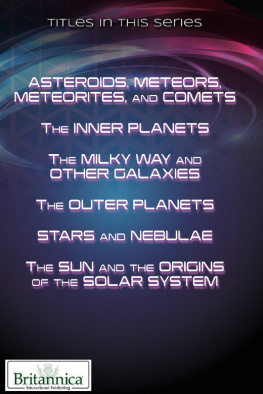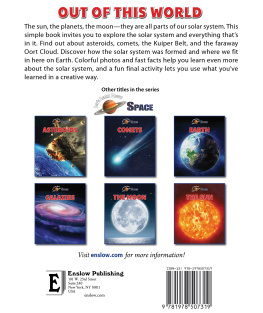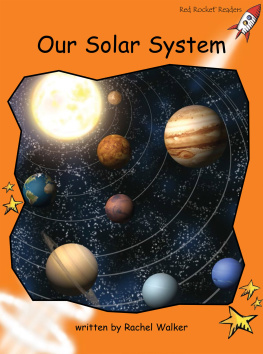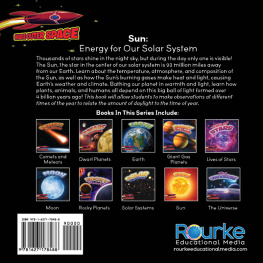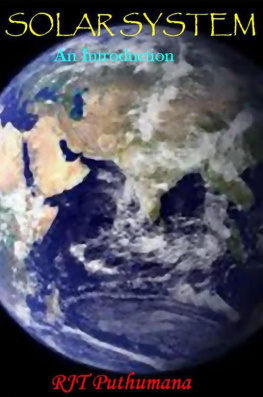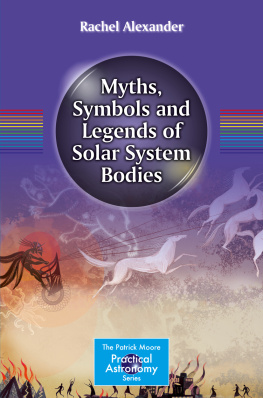Published in 2019 by Britannica Educational Publishing (a trademark of Encyclopdia Britannica, Inc.) in association with The Rosen Publishing Group, Inc.29 East 21st Street, New York, NY 10010
Copyright 2019 by Encyclopdia Britannica, Inc. Britannica, Encyclopdia Britannica, and the Thistle logo are registered trademarks of Encyclopdia Britannica, Inc. All rights reserved.
Rosen Publishing materials copyright 2019 The Rosen Publishing Group, Inc. All rights reserved.
Distributed exclusively by Rosen Publishing.
To see additional Britannica Educational Publishing titles, go to rosenpublishing.com.
Britannica Educational Publishing
J.E. Luebering: Executive Director, Core Editorial
Andrea R. Field: Managing Editor, Comptons by Britannica
Rosen Publishing
Nicholas Faulkner: Editor
Brian Garvey: Series Designer / Book Layout
Cindy Reiman: Photography Manager
Library of Congress Cataloging-in-Publication Data
Names: Faulkner, Nicholas, editor. | Gregersen, Erik, editor.
Title: The sun and the origins of the solar system / edited by Nicholas Faulkner and Erik Gregersen.
Description: New York : Britannica Educational Publishing, in Association with Rosen Educational Services, 2019 | Series: The universe and our place in it | Audience: Grades 7-12. | Includes bibliographical references and index.
Identifiers: LCCN 2018016349| ISBN 9781508106067 (ebook)
Subjects: LCSH: SunJuvenile literature. | Solar systemOriginJuvenile literature.
Classification: LCC QB521.5 .S8647 2018 | DDC 523.7dc23
LC record available at https://lccn.loc.gov/2018016349
Manufactured in the United States of America
Photo credits: Cover (top), p. 1 Carlos Fernandez/Moment/Getty Images; cover (bottom) tsuneomp/Shutterstock.com; back cover iStockphoto.com/lvcandy; p. 7 Juergen Faelchle/Shutterstock.com; p. 11 Larry Brownstein/Getty Images; pp. 12, 14 Photos.com/Thinkstock; p. 13 Photos.com/Jupiterimages; p. 16 NASA; pp. 18, 37, 57, 62 SOHO (ESA & NASA); pp. 26, 32-33, 55, 70-71 Encyclopdia Britannica, Inc.; p. 29 Courtesy of Big Bear Solar Observatory, California Institute of Technology; pp. 34-35 Hinode JAXA/NASA; p. 39 NASA/GSFC/SDO/AIA; p. 41 G.L. Slater and G.A. Linford; S.L. Freeland; the Yohkoh Project; p. 43 Werner Heil/NASA; p. 47 TRACE Project/NASA; p. 50 The Royal Swedish Academy of Sciences/The Institute for Solar Physics; pp. 64-65 NASA/Johnson Space Center/Earth Sciences and Image Analysis Laboratory; pp. 78-79 NASA/GSFC; p. 81 NASA/Lunar and Planetary Institute; p. 83 NASA/JPL/Caltech; pp. 94-95 NASA/JPL; pp. 106-107 NASA/JPL/Space Science Institute; pp. 112-113 Stocktrek Images/Getty Images; interior pages background (blue triangles) DiamondGraphics/Shutterstock.com.
CONTENTS
T he Sun far outweighs all other components of the solar system combined. In fact, the Sun contains more than 99 percent of the mass of the entire solar system. Nevertheless, the Sun is a fairly average-sized star. From Earth it looks so much larger and brighter than other stars only because it is so much nearer to Earth than any other star. If the Sun were much farther away, it would look much like many other stars in the night sky. But if this were so, life as we know it could not exist on Earth. The Sun provides nearly all the heat, light, and other forms of energy necessary for life on Earth. In fact, the Sun provides the great majority of the energy of the solar system.
Astronomers believe that the solar system formed as a by-product of the formation of the Sun itself some 4.6 billion years ago. According to the prevailing theory, the Sun and its many satellites condensed out of the solar nebula, a huge interstellar cloud of gas and dust. The solar system began forming when the gravity of this interstellar cloud caused the cloud to start contracting and slowly spinning. This could have been caused by random fluctuations in the density of the cloud or by an external disturbance, such as the shock wave from an exploding star.
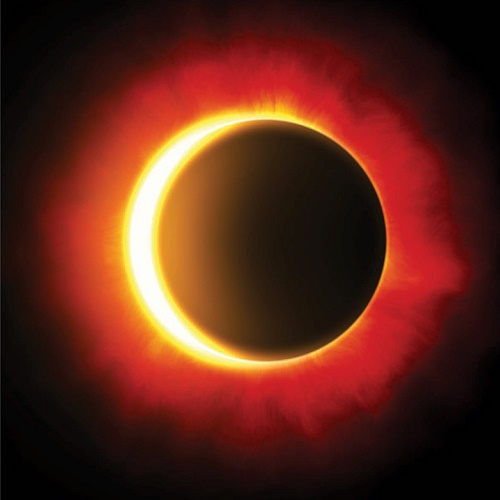
The Sun and Moon during a solar eclipse.
As the interstellar cloud squeezed inward, more and more matter became packed into the center, which became the protosun (the material that later developed into the Sun). The contraction caused the cloud to spin faster and faster and to flatten into a disk. Eventually, the center of the cloud collapsed so much that it became dense enough and hot enough for nuclear reactions to begin, and the Sun was born.
Meanwhile, away from the center, the gas and dust in the spinning disk cooled. Solid grains of silicates and other minerals, the basis of rocks, condensed out of the gaseous material in the disk. Farther from the centerwhere temperatures were lowerices of water, methane, ammonia, and other gases began to form. The spinning material in the disk collided and began to stick together, forming larger and larger objects. Ultimately, some of the clumped-together objects grew huge and developed into planets.
The inner planets formed mostly from chunks of silicate rock and metal, while the outer planets developed mainly from ices. Smaller chunks of matter and debris that did not get incorporated into the planets became asteroids (in the inner part of the solar nebula) and comet nuclei (in the outer part of the nebula). At some point after the matter in the nebula had condensed and clumped into objects, the intensity of the solar wind suddenly increased. This blew much of the rest of the gas and dust off into space.
This general formation process is thought not to be unique to the solar system but rather to be how stars and planets throughout the universe develop. Astronomers have detected disks of matter surrounding newly formed stars.
The future of the solar system depends on the behavior of the Sun. If current theories of stellar evolution are correct, the Sun will have much the same size and temperature for about 5 billion more years. By then, all of the hydrogen in its core will have been used up. Other nuclear reactions will begin in a shell around the core. Then the Sun will grow much brighter and larger, turning into a red giant and expanding beyond the orbit of Venus, perhaps even engulfing Earth. Much later, when all its nuclear energy sources are exhausted, the Sun will cool down, evolving into a white dwarf star. Around it will orbit the remaining planets. They will have turned into frozen chunks, orbiting their shrunken star.
A lthough the Sun is a rather ordinary star, it is the source of virtually all Earths energy. It provides the heat and light that make life on Earth possible. Yet Earth receives only about half a billionth of the energy that leaves the Sun.
The telescope has been used in solar studies since 1610. The solar tower telescope was later invented for use in solar studies. Its long focal length can give very large images of the Sun. The coronagraph, another special telescope, is used to examine the Suns outer atmosphere. The instrument blocks the direct light from the Suns disk, allowing the much dimmer corona to be viewed.
The Italian scientist Galileo Galilei and the German mathematician Christoph Scheiner were among the first to make telescopic observations of sunspots. Scheiners drawings in the Rosa Ursina are of almost modern quality, and there was little improvement in solar imaging until 1905. In the 1670s the British astronomer John Flamsteed and the French astronomer Gian Domenico Cassini calculated the distance to the Sun. Sir Isaac Newton set forth the role of the Sun as the centre of attraction of the known planetary system.

